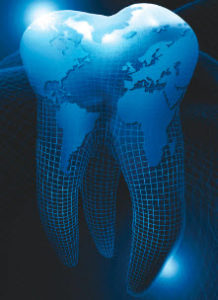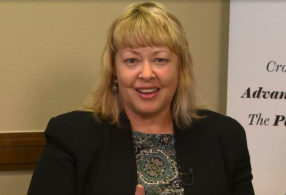October 19, 2016
In this, our modern, data-infused era of medicine, science has elucidated connections within our bodies that were not apparent only a few years ago. The Human Microbiome Project and similar initiatives have uncovered compelling evidence that the quality and diversity of bacteria residing inside of us can have a significant impact on both our health and susceptibility to disease. Innovations in cancer, leveraging tools of genomic sequencing, suggest that in many instances, a cancer’s geography within the body may be less important than specific genetic mutations of the tumors.
These insights have given rise to new classes of drugs and therapeutic strategies. And in a recent discovery that upended decades of textbook teaching, researchers determined last year that the brain is directly linked to the immune system by vessels that were previously unknown. This insight might have profound implications for conditions ranging from Alzheimer’s to autism and multiple sclerosis, and is uniting the fields of neurobiology and immunology like never before.
Indeed, the current ethos in the life sciences seems to be one of interdisciplinary connectedness, of silos coming down, of shared observational and computational tools—all giving rise to a more complete picture of human health.
It is thus no wonder that the historical divide between the dental profession and the evidence-based methods of general medicine is finally beginning to crumble. Over the past decade and a half, there has been considerably more awareness than ever before that oral health is indeed a part of our overall health.
 This, however, has not been the case through the ages.
This, however, has not been the case through the ages.
Dentistry is an old profession—practiced as early as 7,000 B.C. in the Indus Valley, refined by the Egyptians around 2,900 B.C. and written about by Hippocrates—the father of medicine—who believed that a complete knowledge of the body as a whole was necessary for effective medical treatment. Yet dentistry has traditionally remained a separate discipline from other areas of healthcare.
Of course, the field of oral care has been at the forefront of some of our most successful public health measures, including the introduction of fluoride treatment to prevent dental caries, or tooth decay, which is the most prevalent dental disease, but also a condition that affects most individuals worldwide. And many of us are far more likely to see a dentist than a general medical practitioner—which in an integrated healthcare environment could offer opportunities for general health screenings.
Meanwhile, we are amidst a global oral disease epidemic, and the statistics are startling: nearly 100 percent of adults have had cavities. About one-fifth of middle-aged adults have gum disease so severe that they could lose their teeth—and about a third of the world’s elderly citizens no longer have any of their original teeth.
As research continues to reveal the many ways that the health of the mouth may impact the rest of the body, the implications of this schism between the dental and medical communities take on more serious dimensions. And it is clear that the exigencies of world health would mandate that these boundaries come down.
It was back in 2000 when then-U.S. Surgeon General David Satcher prioritized the issue in his landmark report. He called the problems of global oral health “a silent epidemic promoting the onset of life-threatening diseases which are responsible for the deaths of millions of Americans each year.”
Periodontitis—the swelling, bleeding, receding gums caused by some species of bacteria in our mouths—may raise the risk of a number of serious health conditions. That list includes stroke, respiratory illness, and cardiovascular disease. Infection and inflammation in the mouth may also worsen adult-onset (type 2) diabetes or cause premature birth.
Some of these conditions are exacerbated by the body’s continually simmering inflammatory response, as the immune system fights the bacterial invaders in gum tissue. These microbes can also slip into the bloodstream, settling into the arteries around the heart, or may be inhaled into the lungs, causing pneumonia. Intensive research continues to explore the complex associations between periodontal disease, inflammation and various medical conditions.
But oral health is important not just because it is inextricably connected to our overall health, but also because of its social, economic and psychological significance. Consider the story of Laurie Abbott, which was reported in the New York Times a few years back. Abbott has diabetes, a condition that raises the risk of gum disease, and after her husband was laid off from his job, she couldn’t afford dental work. She subsequently lost all of her teeth. “Since I didn’t have a smile,” she said, “I couldn’t even work at a checkout counter.”
On the other end of the generational spectrum, tooth decay can impact children’s academic success: mouth pain from cavities is among the leading reasons that children are absent from school.
But finally, awareness is growing that the mouth is not separate from the rest of the body, and that oral health must be integrated within an overall healthcare plan. Radical changes are happening in education, with medical and dental schools beginning to merge curriculums. Some programs are now educating dentists on medical issues they should be aware of and are also teaching doctors about oral disease.
Healthcare professionals are starting to realize that for those who rarely see a doctor, basic screening for high blood pressure or elevated blood sugar during a visit to the dentist could save lives. In some countries, like Malaysia, dentistry has been integrated within the overall healthcare system.
In an attempt to address the global oral health crisis, governments are working to bring care to the most underserved populations: children, senior citizens, and those who live in remote areas. The focus is on prevention, education and innovative modes of treatment, which experts say will ultimately lower costs. Many countries are sending professionals out into schools, elder care facilities, and launching mobile dental clinics. Dental therapists are increasingly performing cleanings and taking x-rays, while leaving complex, difficult procedures to dentists.
But even within the traditional office paradigm, Millennial Generation dentists are reinventing the practice. They are incorporating exciting new technologies for diagnosis and treatment. Over the next decade, they will rely more and more on teledentistry, smartphone communications, and greater collaboration with colleagues in both dentistry and medicine. Like other areas of health, dentistry is becoming increasingly digitized, flexible and mobile.
Innovations continue to improve diagnostics. Soon, new biologically active fillings may be able to regenerate decayed teeth, and the most effective treatment options may be determined by analyzing personal genetics. If a crown is needed, it may be created on the spot with a 3-D printer.
The impact of oral disease on whole-body health and the changes to the practice of dentistry worldwide are the subjects of this publication from Scientific American Custom Media, The Future of Oral Health, produced in collaboration with Colgate. Here we present information on the latest trends and technologies, and look to the future through the eyes of top researchers and experts.
The future of dentistry looks very different from today, with greater emphasis on prevention that will translate into fewer cavities and less periodontal disease; easier access to care; and shorter treatment time. Much more can be done to improve the state of oral health around the world, but the prediction is that 21st century dentistry will increasingly provide healthy and brighter smiles.
Credit: Kenn Brown, Mondolithic Studios




















